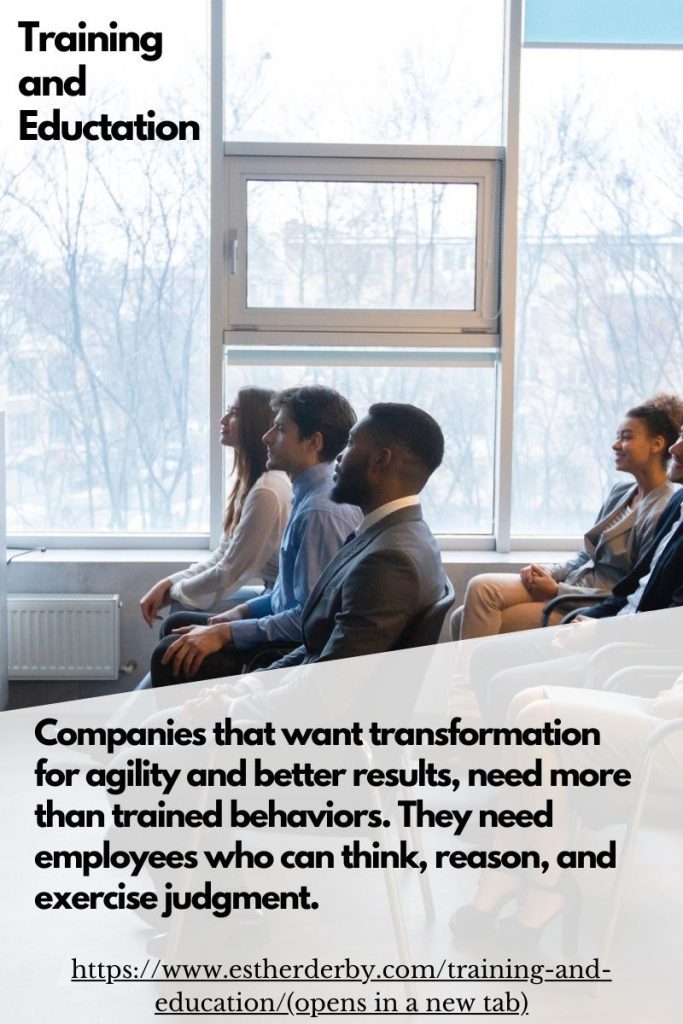Recently, while discussing how job descriptions and evaluation criteria impact collaboration, a director commented, “Behavior. That’s what we’re after. Behavior!” Her comment struck me as both familiar and very odd. However, the director’s comment did cause me to reflect on the difference between training and education.
Training
As a corporate employee, I received a lot of training.
As a new project manager, I was taught how to use project management software to create a work breakdown structure. I learned how to link dependent tasks, and assign resources (aka people) to tasks.
When the department rolled out a new Software Development Life Cycle (SDLC) methodology, I received instruction on how to complete various templates. Our trainers emphasized which we must do, and which were optional.
As a new dev manager, I received training on how to fill in HR, budget, and equipment requisition forms.
Through these training classes, I learned the mechanics of some (narrow) aspects of my job, and specific (narrow) skills and behaviors.
None of the training addressed how to think about the dynamics of software development or managing software projects. The training I received didn’t address how to think about my role.

Education
Thankfully, I also received an education in management. My education came about through work experience—but also on my own time and often at my own expense. To start my education, I read, I sought out mentors. I attended seminars. Eventually I enrolled in a graduate program in organizational leadership.
I gained an understanding of several areas relevant to my job. I studied human relations, organizational theory, leadership theory, team dynamics, systems thinking, how to think about what skills were need on a team–now and in the long term, and more.
Through education, I gained both knowledge and the ability to reason and exercise judgement in those domains.
Companies that want transformation for agility and better results, need more than trained behaviors. They need employees who can think, reason, and exercise judgment. People may need new skills and behaviors–they also need to understand the why and when for choosing one behavior, skill, practice, or process over another.
Training AND Education
Start with training to introduce new skills and provide common language. Then provide plenty of education– workshops, coaching, and mentoring so people can learn the why and when and put their skills to use with judgement and intention.








0 Comments